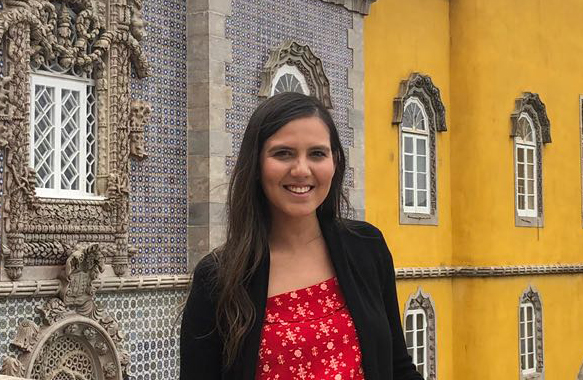Belinda Colosimo
Belinda Colosimo completed her Master of Construction Management whilst working in the construction sector, and is now a full time Graduate Quantity Surveyor. We caught up with her to find out about her Melbourne School of Design experience, and what trends she believes are important for the industry and future construction professionals to consider.

What would you like people to know about Construction Management?
Construction management is a diverse field that attracts people from all walks of life. It will challenge you to think outside the box and will allow you to go into many different roles. Also, the principles of construction management are extremely transferrable into other areas of work.
What made you decide on Construction Management as the course and career you wanted to pursue?
I have always been interested in the built environment and being able to work within a profession that allows me to be involved in seeing an idea become something tangible. Seeing how the construction industry can influence and reshape a city environment and impact on other industries has fuelled my desire to want to be a part of that change.
Where did you work while you were studying in your graduate degree?
After completing my undergraduate degree at the University, I undertook a work gap year at a Tier One contractor and then continued my study with a Master of Construction Management, whilst I worked.
During this time, I was able to gain practical work experience from a contractor’s perspective, by working in different areas such as estimating in Head Office, and on site participating in health and safety, quality, contract administration and in the coordination of building works.
How did you manage a work/study/life balance whilst studying and working at the same time?
Finding the right balance between work, study and life seemed tricky at first, but then I found a balance by planning my timetable in advance and selecting subjects, lectures and tutorials that would ensure there would be less clashes between university and work or extracurricular activities. If there were classes that started early or were closer to the end of the day, I would pick them as it would enable me to also complete a full day at work.
Communication was also important in managing peoples’ expectations during this time. I would always keep clear lines of communication with my manager at work to ensure that if an assignment or additional time away from work was required, they would be notified as early as possible to ensure my work responsibilities could be managed in advance.
What was your favourite subject in the program and why?
My favourite subject in the Masters of Construction Management Program was Supply Chains in Construction. I really enjoyed how the subject wasn’t taught in a typical lecture style, but instead as a seminar where the lecturer directly engages each student by posing questions and encouraging discussion.
The subject was of particular interest to me as it tackled the topic of supply chains and its importance within the construction industry. Focus on supply chains within the construction industry is definitely increasing, as key players are realising that saving time and costs can lead to minimising waste, increasing productivity, and more. This is resulting in new innovative techniques being introduced within the supply chain to increase its effectiveness and efficiency.
What are you doing now you’ve completed your studies at MSD?
Recently, I have taken up a position as a Graduate Quantity Surveyor at WT Partnership. In this position, I have been able to work on projects in various sections of the industry including residential, commercial and education. I have been able to gain insight in cost management from the client’s perspective by carrying out cost planning from a project’s inception up to its completion including monitoring of a project’s life cycle cost.
My experience so far has enabled me to meet various people within the industry such as subcontractors, consultants, contractors, clients and suppliers and allowed me to improve on my communication skills. Through this, I have been interested in how other disciplines operate and the importance of each person’s role throughout a project’s duration.
What trends do you see being important to the future of our built environments? What do you hope built environment professionals will achieve?
The Construction Industry is forever evolving, with new technologies being introduced constantly. The industry has recently seen a big push towards sustainability to meet the demands of sustainable consumption and production. This trend has led to the introduction of new sustainable materials, designs and ways of construction, that has created an even bigger emphasis on material procurement strategies thereby shifting the focus towards more locally sourced products and ideas.
This has also evolved into a focus on recyclable materials, with the industry already taking steps towards incorporating this more sustainable approach by, for example, using demolished material as an aggregate base for new buildings.
Another trend that the construction industry is moving towards is collaborative project delivery, such as the use of websites promoting information sharing (Aconex, Dropbox, etc). I can see this trend developing further, especially with the industry push towards BIM (Building Information Modelling) or other platforms, which encourages the whole project team to work collaboratively thereby reducing the risk of design errors and providing efficient design, as well as improving on project delivery timescales by allowing the whole team to work on a full project life cycle model.
This is further supplemented by an increase in the use of drones, robotics, virtual reality and other emerging technologies that bring together the design team, client, and other project stakeholders supporting efficient project management and delivery.